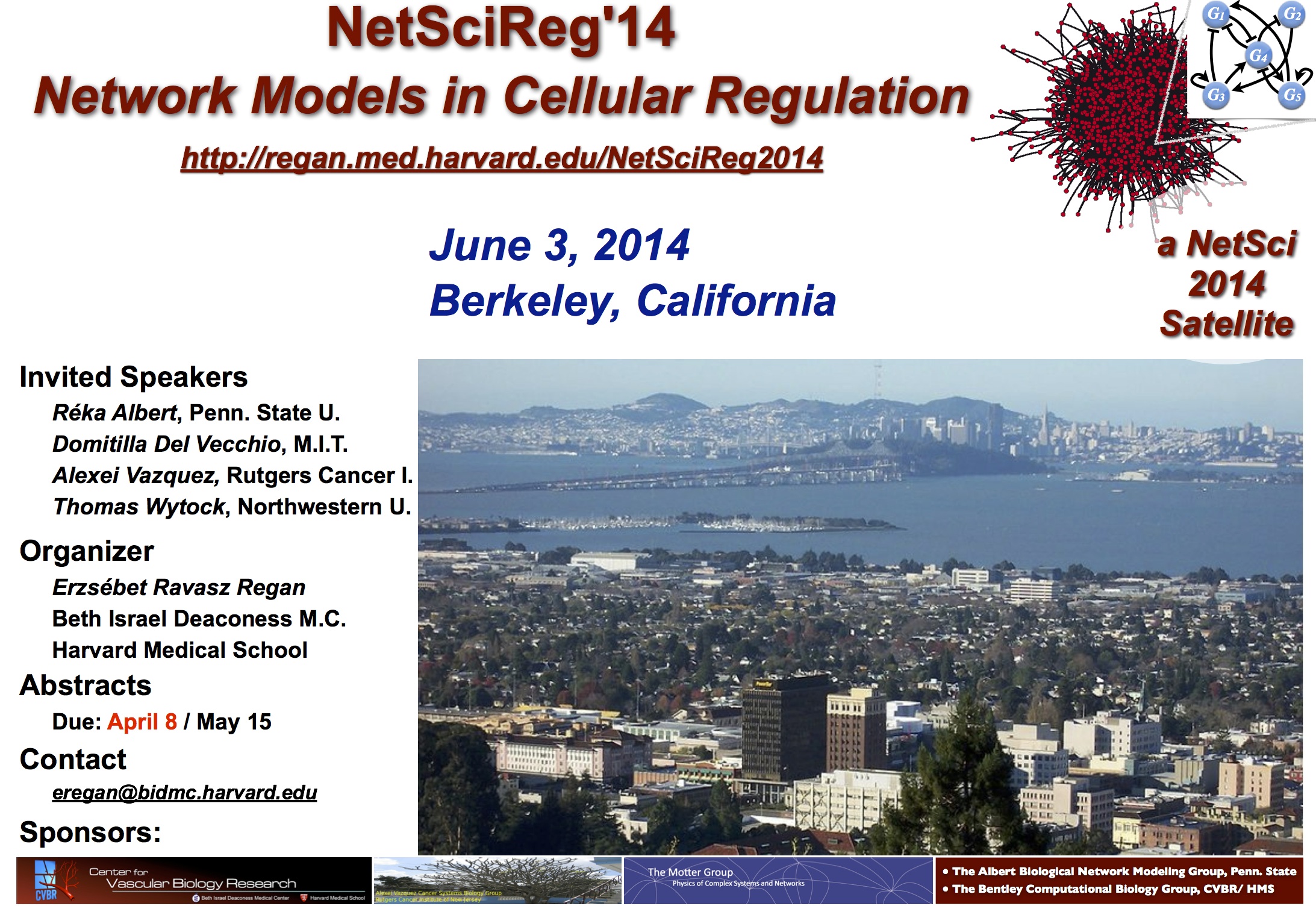NetSciReg'14 - Network Models in Cellular Regulation
June 3, 2014 - Berkeley, California
| Synopsis |
| Program |
| NetSciReg'14 Flyer |
| Important Dates |
| Registration |
| Call for Contributed Talks |
| Logistics |
| NetSci 2014 |
| NetSciReg'13 |
| Sponsors |
|
Time: 11:00 - 11:50 AM
Type: Invited presentation
Affiliation: Department of Mechanical Engineering, Laboratory for Information and Decision Systems (LIDS), Massachusetts Institute of Technology
Abstract The ability to predict the behavior of a complex network from that of the composing modules still remains a significant challenge in systems biology. A major obstacle is context-dependence, that is, the behavior of modules often depends on their context. In this talk, I will focus on two major sources of context dependence: (1) loading applied on a module when its output protein is used to regulate a process in a different module and (2) loading that each module places on the limited amounts of shared cellular resources. Loading phenomena in biological networks have been collectively termed retroactivity to extend the notion of electrical or mechanical load to biological systems. Retroactivity between connected modules results in counter-intuitive behaviors, such as making a stable system into an oscillator, making a node respond to a perturbation in a different node even without a regulatory path between them, or causing negative autoregulation to slow down system dynamics as opposed to speeding it up as generally believed. Further, because modules apply a load to the limited amount of shared transcription/translation resources, seemingly unconnected modules become actually coupled in fairly surprising ways. Here, I will illustrate a systematic and physics-based modeling framework that allows low-dimensional Hill function-based models to be extended to account for retroactivity between connected modules, thus allowing to reliably predict loading effects based on macroscopic biochemical parameters. I will then propose a modeling framework, which carries substantial analogies with microeconomics models, to characterize and predict how the behavior of unconnected modules becomes coupled because of competition for limited resources. Experimental data obtained from suitably designed synthetic genetic circuits confirms the theoretical predictions. |
SPONSORS: |





